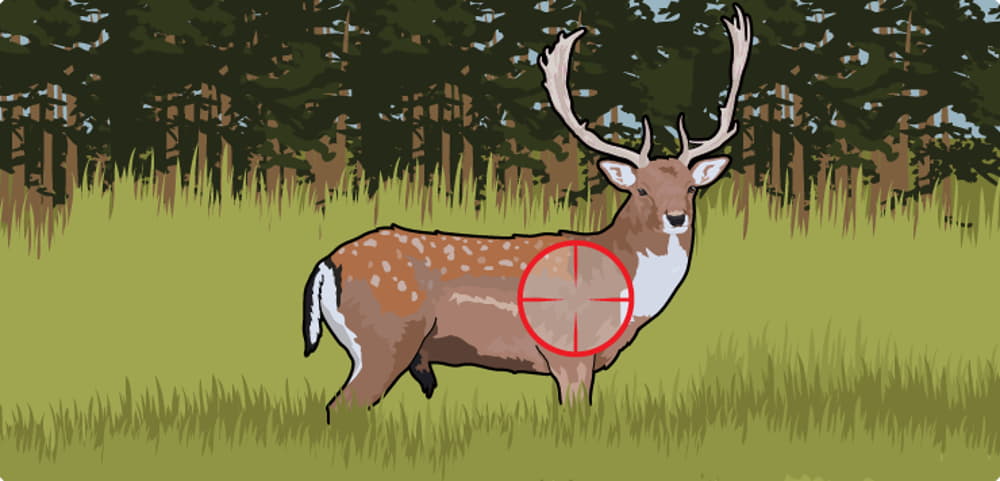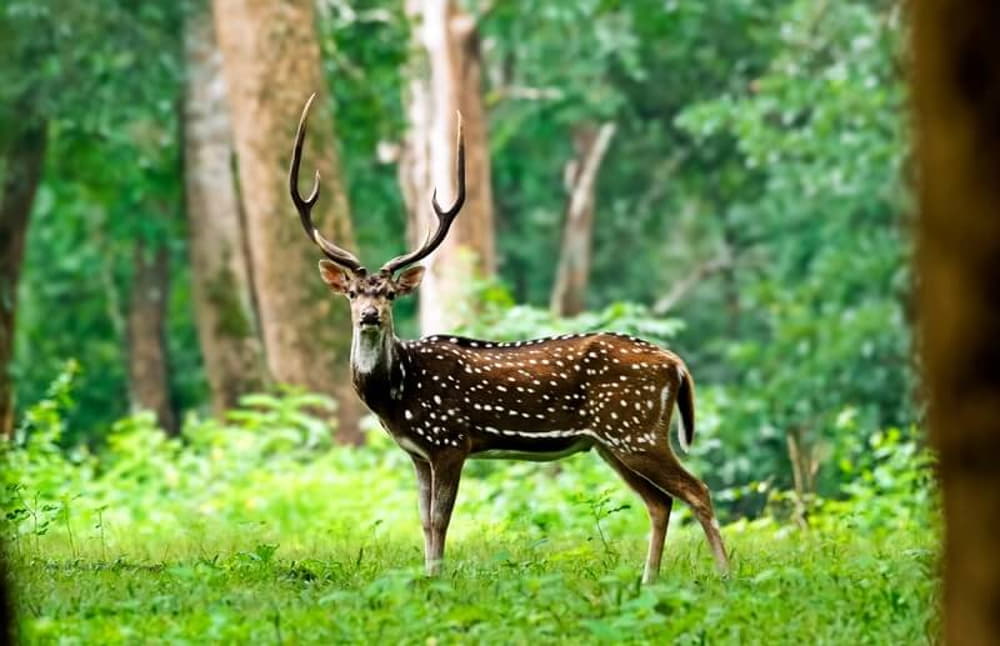If you’re an avid hunter, you probably know that shot placement is crucial. It’s not just about landing a hit, but doing so as humanely as possible. And when it comes to axis deer hunting, this is no different. Axis deer shot placement can have a significant impact on the result of a hunt.
To achieve a quick and humane slaughter, an ethical and effective hunt requires precision shot placement. This avoids unnecessary suffering while also guaranteeing that the harvested animal is used.
Axis deer have particular physical traits that distinguish them from other deer species. So, it is critical for hunters to understand their distinctive anatomy. This article delves into the critical aspects for shot placement on axis deer, such as their important organs, common shot angles, and ethical hunting techniques.
Understanding these concepts can not only improve your hunting experience, but will also help with wildlife conservation efforts.
Table of Contents
Understanding Axis Deer Anatomy
Axis deer (Axis axis), often known as chital or spotted deer, are a popular and sought-after species among hunters and nature enthusiasts. Originating from the Indian subcontinent, these elegant creatures have been introduced to various regions around the world.
A mature buck can weigh over 200 pounds and share many traits with Elk and Red Deer. During the breeding season, they are extremely vociferous. They thrive in a diverse range of habitats.
Before we dive into shot placement, let’s take a quick look at the anatomy of axis deer. It’s worth mentioning that these creatures have a distinct skeletal structure. Because their shoulder bones are inclined forward, they have a somewhat restricted target area.
Furthermore, the ribs of an axis deer slope downhill toward the front of the animal, making it more difficult to target crucial organs. Because of these considerations, accuracy and precision are critical when shooting axis deer.
The Best Axis Deer Shot Placement
So, where should you aim when hunting axis deer? The answer will depend on the angle at which the animal presents itself to you. Let’s go over each scenario.
Broadside Shot
A broadside shot is when the deer is facing perpendicular to your position. Because the important organs are more exposed, this is often the best posture for taking a shot.
Aim behind the shoulder and about one-third of the way up from the bottom of the chest cavity for a broadside shot. This location provides a clear passage to the heart and lungs, which are the major targets for a compassionate euthanasia.
Quartering Away Shot
A quartering away shot is when the deer is facing away from you at an angle. In this scenario, aim for the back of the opposite shoulder. The goal is to hit the liver, lungs, and heart, all of which are located in the upper chest cavity.
This shot can be difficult to get off. So, before you take the shot, make sure you’re confident in your accuracy and have a clear line of sight.

Quartering Towards Shot
A quartering towards shot is when the deer is facing toward you at an angle. Aim for the base of the deer’s neck, slightly above the shoulders, in this situation. This location is more effective than aiming for the center of the chest because it provides a clean passage to the heart and lungs.
Head-on Shot
A head-on shot is generally not advised. Because it can be difficult to strike essential organs without damaging other parts of the body. However, if the deer is presenting itself in this manner, aim for the lower part of the neck where it meets the chest cavity. This will give you the highest chance of hitting the heart and lungs.
Read this post: Where To Shoot Deer With A 223?
What Is The Best Time To Hunt Axis Deer?
The ideal time to shoot axis deer is determined mostly by their behavior and natural rhythms, which are impacted by both time of day and season. Axis deer are most active in the early morning and late evening, making these hours excellent for hunting. They are more likely to be out hunting for food or traveling to and from their sleeping sites during these times.
Axis deer are also noted for their rutting season, which occurs when the bucks are aggressively seeking mates. The rutting season usually lasts from late August through November, depending on the location. This is a good time to go hunting since the bucks are more active, noisy, and less cautious.
Tips For Ethical Axis Deer Hunting
Now that you know where to aim when hunting axis deer, let’s go over some additional tips for ethical hunting:
- Know the Regulations: Before planning any hunting trip, familiarize yourself with the local and state hunting regulations. Understanding the hunting season, bag limits, and any specific rules related to axis deer hunting is crucial.
- Practice, practice, and more practice: Make sure you’re familiar with your firearm and have enough shooting range practice.
- Use the right equipment: Choose ammunition that is appropriate for the animal and your firearm and make sure your gear is well-maintained.
- Be patient: Rather than taking a dangerous or unethical shot, wait for the correct one.
- Respect the animal: Handle the animal with care after the kill and use all parts of the animal whenever possible.
- Be Selective: Harvesting mature animals is essential for the health of the population. Avoid taking young or immature axis deer, as they have not yet contributed to the breeding pool and future generations of the species.
- Remove Trash and Litter: Remove any trash or litter you come across, as it can be harmful to wildlife and the environment.
Final Thought
Proper axis deer shot placement is crucial for humane hunting. You must comprehend the animal’s anatomy and know where to target in certain conditions. This can help ensure a swift and ethical execution. When hunting, always prioritize accuracy and respect towards the animal. Good luck with your hunt!

